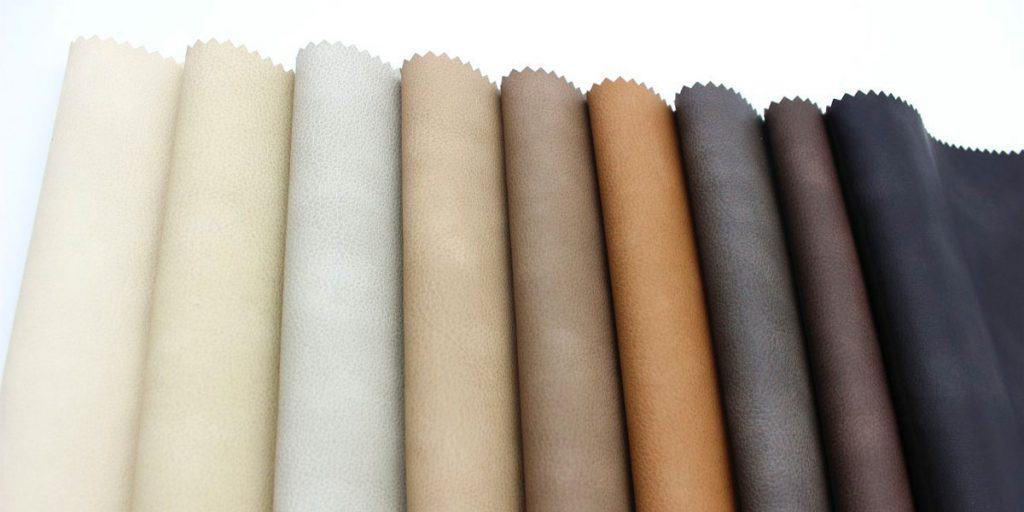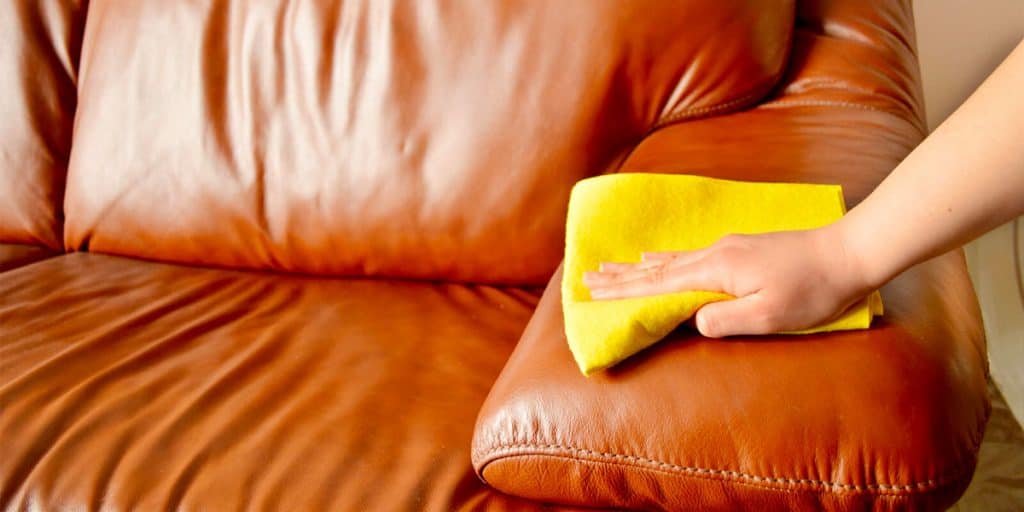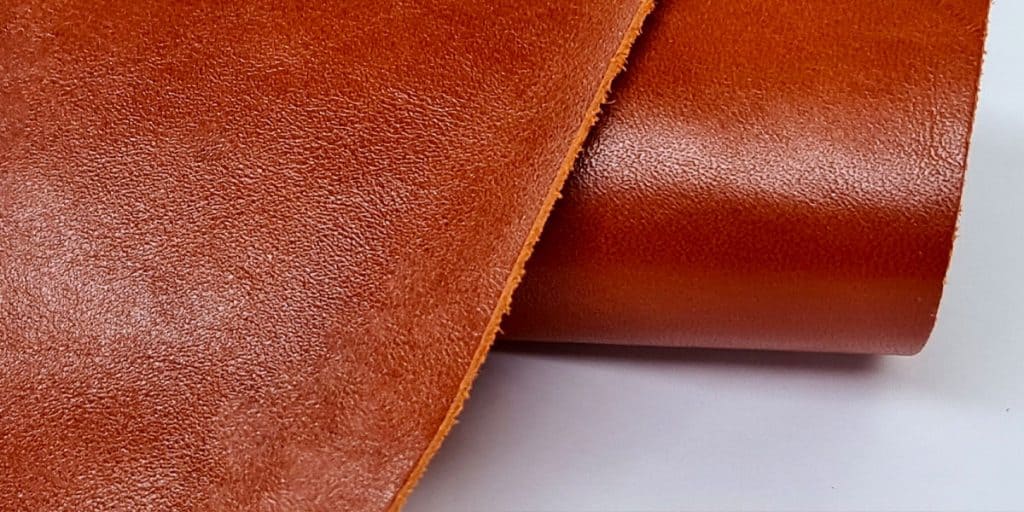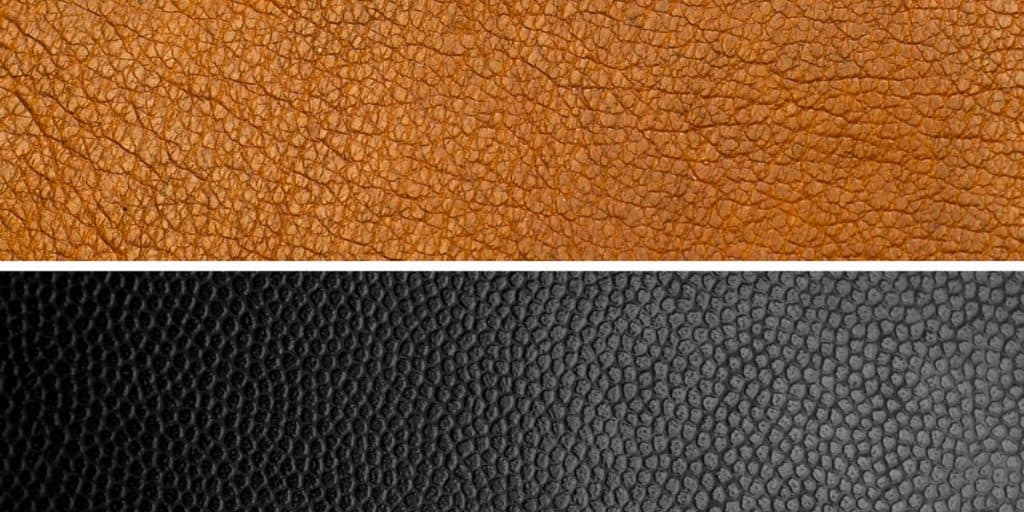Bonded Vs. Faux Vs. Genuine Leather | The Good, The Bad And The Ugly

When shopping for furniture, we tend to explore a pool of options. We look at every possible option, shortlist a few, compare them, and finally weigh the pros and cons before making the final decision. With multiple manufacturers, this pool of possibilities only gets more expansive with time. Selecting one from this entire pool of options is a tough choice. This is where we narrow our search filter and start to look for furniture based on materials used, such as leather.
However, with different leathers now being used to manufacture furniture, it again becomes difficult to fixate on one final product. Faux Leather, Bonded Leather, and Genuine Leather are the three different types of leathers that are used primarily in making furniture. Picking the most delicate piece made out of either of these leathers is again tricky and challenging. However, it helps largely if you have detailed information about all these three types of leathers the next time you’re out shopping for leather products.
In this article, we are going to discuss Faux, Bonded, and Genuine leather in detail. We will lay down every minute specification that can help you make the right.
History Of Leather Usage In Chairs
The earliest record of leather artifacts and upholstery dates back to 2200 BCE. Leather was previously used by our ancestors to protect themselves from natural elements. People in the stone age hunted wild animals for food and then made clothing and footwear from their hides. Since then, Leather was used in making armor and building tents in the nomadic tribes. Following the industrial revolution, the trade between Europe and Asia saw a subsequent rise. The discovery of America brought new hides to Europe, which were then exported to the Asian markets.
The first leather chair was constructed during the early dynastic period ( 3100-2686 BC) in Egypt with frames and used by using leather for upholstery. As time progressed, people realized that leather was much easier to clean as compared to fabric. The older the leather, the more robust it became. Banking on these properties, leather craftsmanship advanced and primarily became a luxury for the wealthy, rich, and elite members of society.
With newer inventions, leather became a primary component of furnishing by the 19th century. The leather couch slowly became a symbol of comfort. By the 20th century, leather was a vital piece of upholstery, usually in the form of a man’s easy chair. Earlier, leather couches served as the center of the living room. A family without a couch in their living room wasn’t deemed fit for society.
Also Read: Best Gaming Chairs Under 100$
What Are The Different Types Of Leathers?
There are three different types of leather, namely Faux, Genuine, and Bonded Leather. Each type has its unique perks and downsides, but all these leathers are aesthetically appealing if you are looking to give your home or yourself a makeover.
Here is what separates the three different leather types from each other
Bonded Leather Vs. Faux Leather Vs. Genuine Leather: Key Differences
Mentioned below are some of the critical differences that separate the three different types of leathers
| Bonded Leather | Faux Leather | Genuine Leather |
| Cheap | Affordable | Expensive |
| Contains Animal Hide | No Animal Hide Present | Contains Animal Hide |
| Poor Durability | High Durability | Normal Durability |
| Easy To Clean | Easy To Clean | High-Maintenance |
| Not Long Lasting ( Max 2 Years ) | Long-Lasting ( 2 or more Years) | Long-Lasting ( More Than 2 Years) |
| Comes with unlimited style and color combinations | Comes with unlimited style and color combinations | Comes with limited style and color combinations |
| Thin | Soft | Thick |
| Prone To Emitting Chemical Odors | Synthetic Smell | Fragrant |
| Non-Breathable | Non-breathable | Breathable |
| Non-Biodegradable | Non-Biodegradable | Biodegradable |
| Stain-Resistant | Stain-Resistant | Not Stain-Resistant |
1. What Is Bonded Leather?

Bonded leather is a type of Faux leather that is generally used to make clothing and furniture. Also referred to as reconstituted or blended leather, it is a manufactured upholstery material that is made using animal hide. Bonded leather is a mix of both real and fake leather which is produced using leftover scraps and fibers that go into the making of genuine leather. These scraps and fibers, when mixed with a polyurethane binder, then create bonded leather. This polyurethane coating is then laced with adhesives to make the fibers bond together and form a sheet. Despite being a mix of both, bonded leather has a short lifespan and isn’t as durable as genuine leather.
| Pros | Cons |
| Cheap | Poor Durability |
| Stain-Resistant | Short Lifespan |
| Comes With Unlimited Style And Color Combinations | Prone To Releasing Chemical Odor |
| Easy To Clean |
2. What Is Faux Leather?

Often referred to as leatherette or vegan leather, faux leather is primarily used in sofas, leather apparel, and chair covers. Unlike any other leather, faux leather does NOT contain animal hide and is made using synthetic materials such as polyurethane (PU) and PVC. Although it looks and feels like real leather, faux leather has a few distinct features which separate it from genuine leather.
Most chairs use faux leather nowdays, these chairs are some of the most comfortable chairs that can be used to regularly or while gaming for long hours. Rocker X, Ficmax, Vertagear SL6000 are some of the best faux leather gaming chairs you buy in the market.
| Pros | Cons |
| Highly Durable And Long-Lasting | Expensive |
| Aesthetically Pleasing | Limited Design Combinations |
| Biodegradable | Prone To Staining |
| Hypoallergenic | High-Maintenance |
3. What Is Genuine Leather?

Genuine leather is made using Real Leather, which is the most delicate piece of leather available. What makes genuine leather stand out from the rest is that it is made out of animal hide, commonly cows, deer, horses, and sheep. These bits of hide then undergo a thorough tanning process that turns the leather into usable material and prevents it from rotting.
Though genuine leather is made using real leather, it is still the lowest quality product that is made using real leather. Genuine leather is typically found in belts, shoes, or bags that people purchase from lower-priced departmental stores. Goods made from genuine leather comprise of several different layers of low-quality leather. These layers are bound together using adhesive and are painted accordingly to make them appear uniform. It’s made from what is left over when the other, higher grades are stripped away for pricier projects.
Genuine leather is divided into three different types depending upon its quality.
Also Read: The Best Pink Gaming Chairs
I. Full-Grain Leather
This is the type of leather that is NOT altered or tailored in any way whatsoever. Full-grain is precisely how the grain appears during the tanning process. This is the strongest and most durable type of leather present since the tight grain retains a good amount of moisture. Full-grain leather only gets better with time and tends to look nicer with age. Full-grain is widely recognized as the best leather money can buy. Though expensive, this leather is highly durable and can last for a lifetime if properly cared for.
II. Top-Grain Leather
This is the 2nd highest quality leather material post-full-grain leather available in the market. This leather is called top-grain leather because the top layer of the leather is either sanded, buffed, or shaved off. Top-grain leather is generally found inside fine leather goods such as wallets and purses sold by high-end designer brands. Top-grain leather is made by splitting a piece of full-grain leather and sanding away any imperfections along the way to give it a more uniform look.
III. Split Grain Leather
During the tanning process, the leather is divided into different layers by splitting them apart. The bottom part of the leather that remains once the leather’s cut or split is called split-grain leather. This split-grain leather is made from the fibrous part of the animal hide after the top part has been separated. Also referred to as suede, split-grain leather has a snappy appearance. Split-grain leather generally looks like normal top-grain leather but has a weak fiber structure.
Also Read: Killabee Gaming Chair Review
| Pros | Cons |
| Completely Biodegradable | Expensive |
| Aesthetically Appealing | Contains Animal Hide |
| Hypoallergenic | High-Maintenace |
| It can last for up to 20 years with proper maintenance | Stains Easily |
How To Differentiate Between Genuine And Faux Leather?

As mentioned earlier, Faux leather is fake leather since it is not made using animal hide. Also, faux leather has unique features that distinguish it from genuine (real) leather. What primarily separates Genuine and Faux leather is the cost. A jacket or a piece of furniture made out of faux leather is relatively cheaper than those made using genuine leather. Though there is a lot of effort to make faux appear genuine leather, there are a few discrepancies that easily separate the two.
In other words, faux and genuine leather can be easily distinguished by looking at the pattern the leather holds. Genuine leather has non-uniform patterns, whereas faux leather comes with uniform patterns. Faux leather comes with unlimited style, color, pattern, and texture combinations, whereas genuine leather comes with relatively limited design combinations. Faux leather apparel is highly durable. However, genuine leather can be lost for over 20 overs with proper care.
The Bottom Line
We hope our article successfully walked you through every key difference between genuine, blonded, and faux leather. Knowing everything about the different types of leathers can come in handy the next time you are shopping for leather outfits or furniture. If you are a vegan, then knowing the leather contents can be a primary factor that can impact your buying decision. While it is relatively expensive to own leather, all the three types of leather mentioned above come with their unique sets of perks and abilities. Though expensive, buying leather items is a worthy and long-lasting investment.






